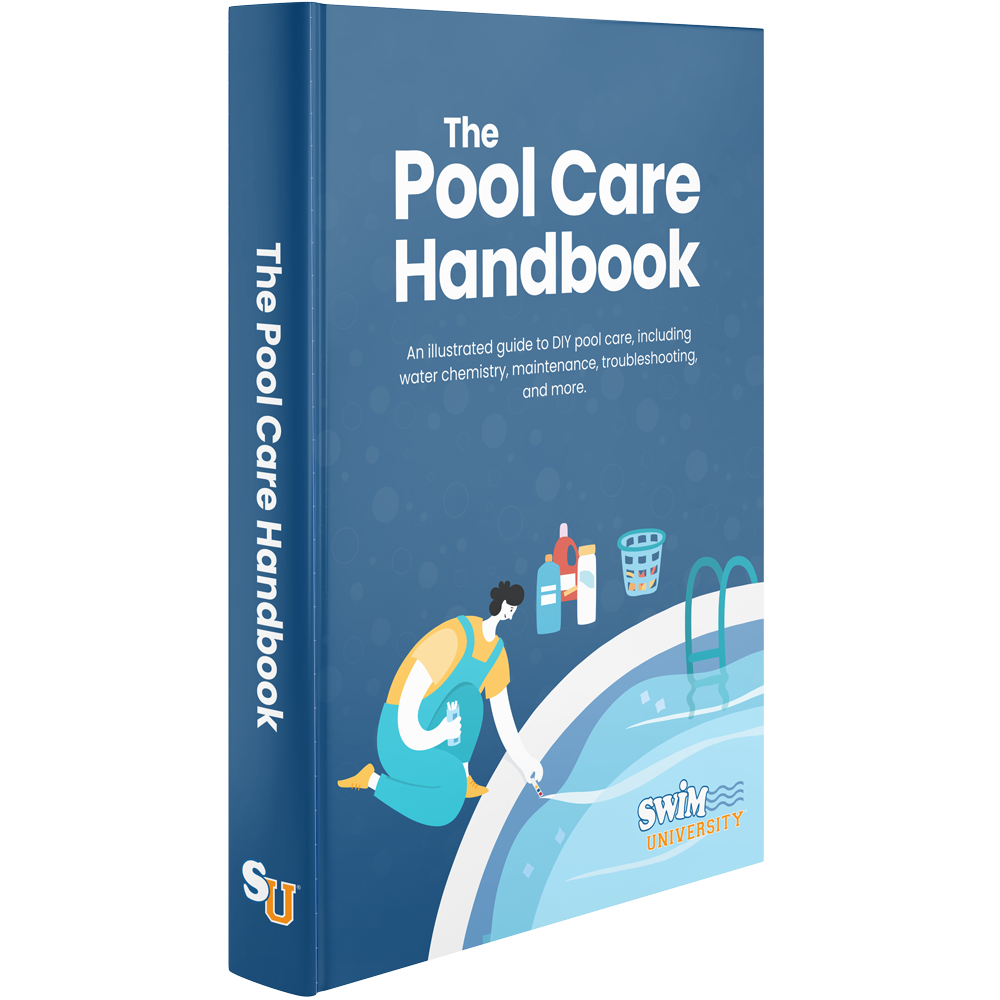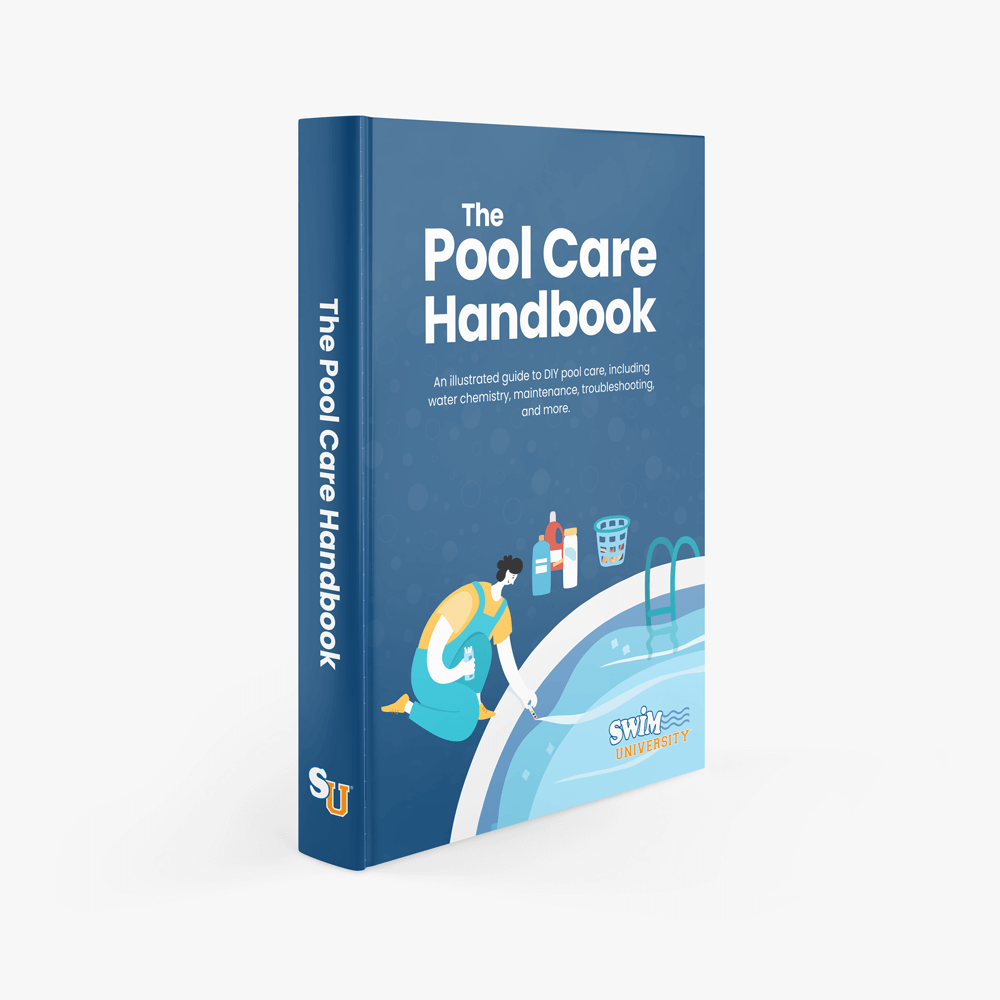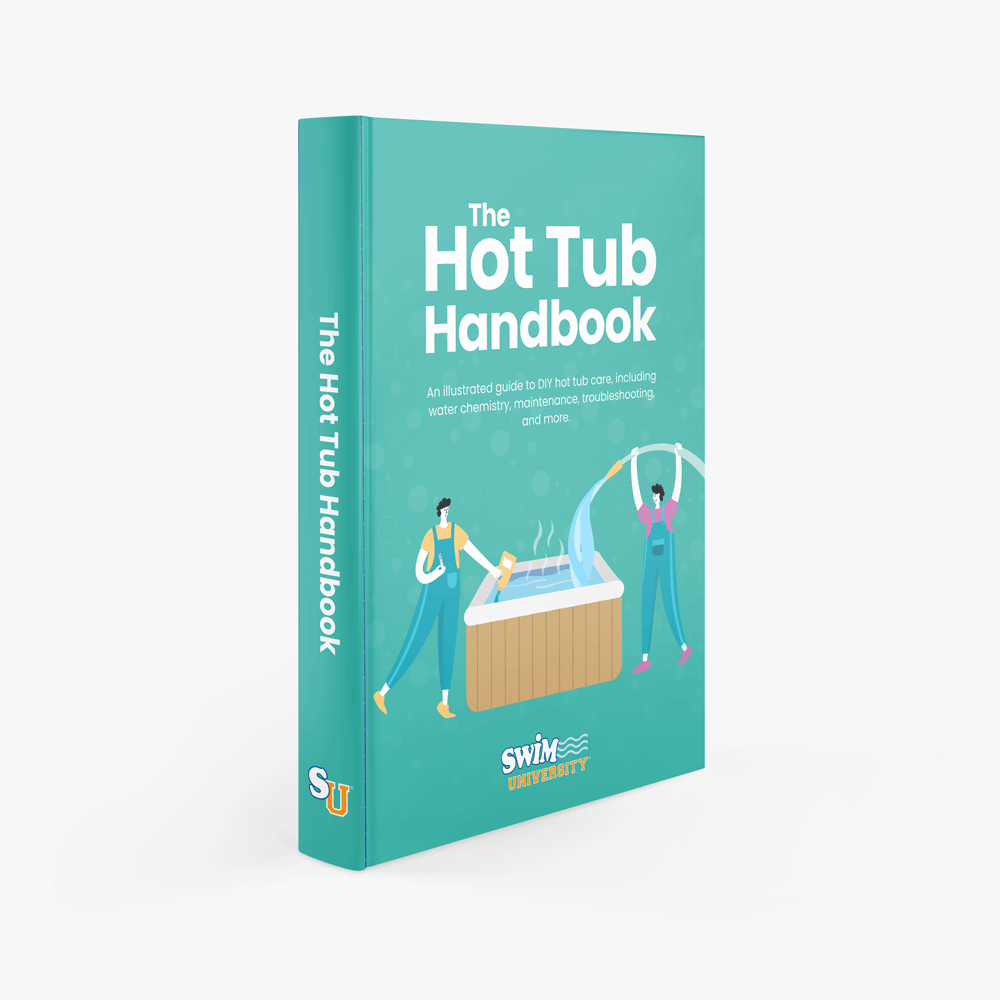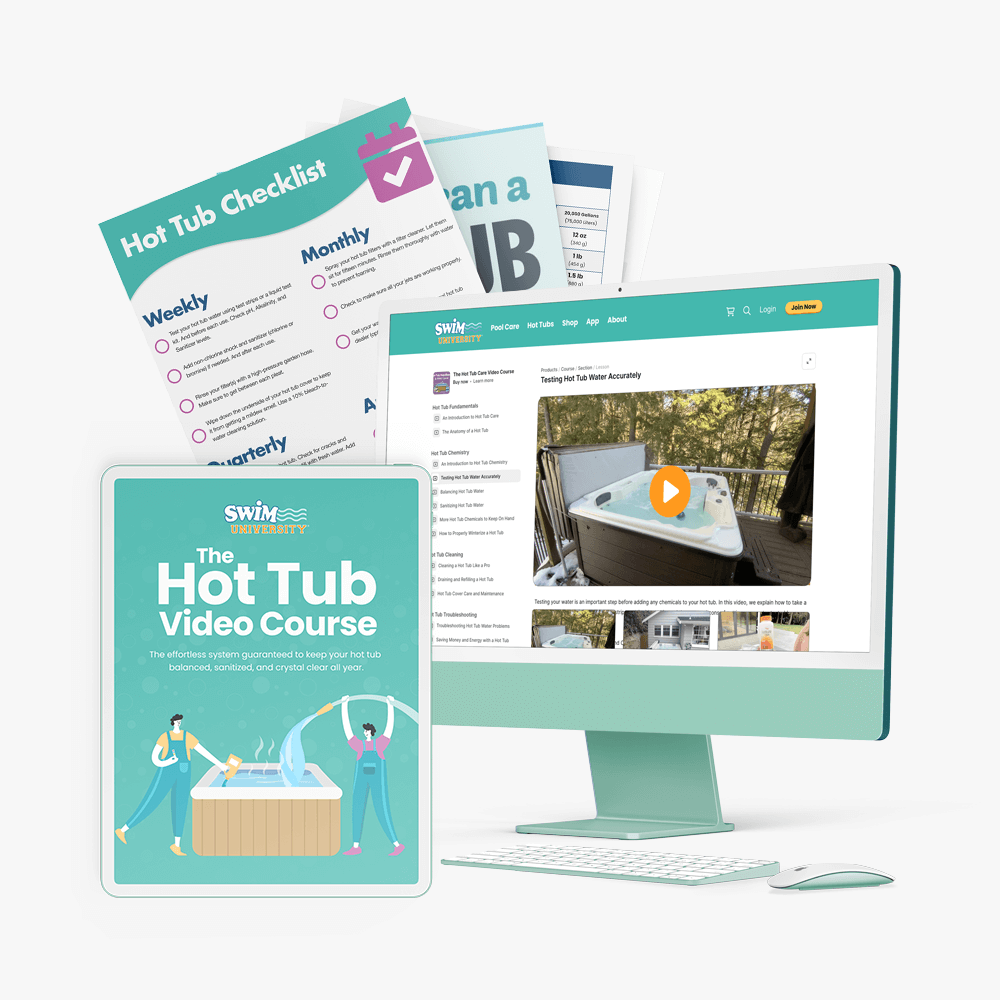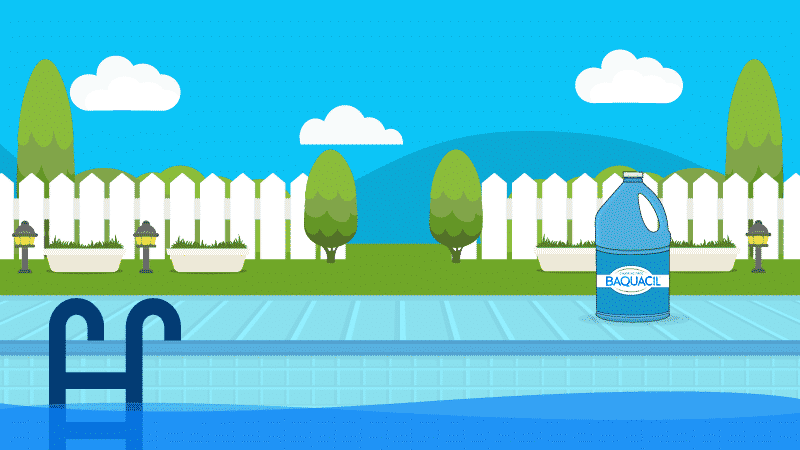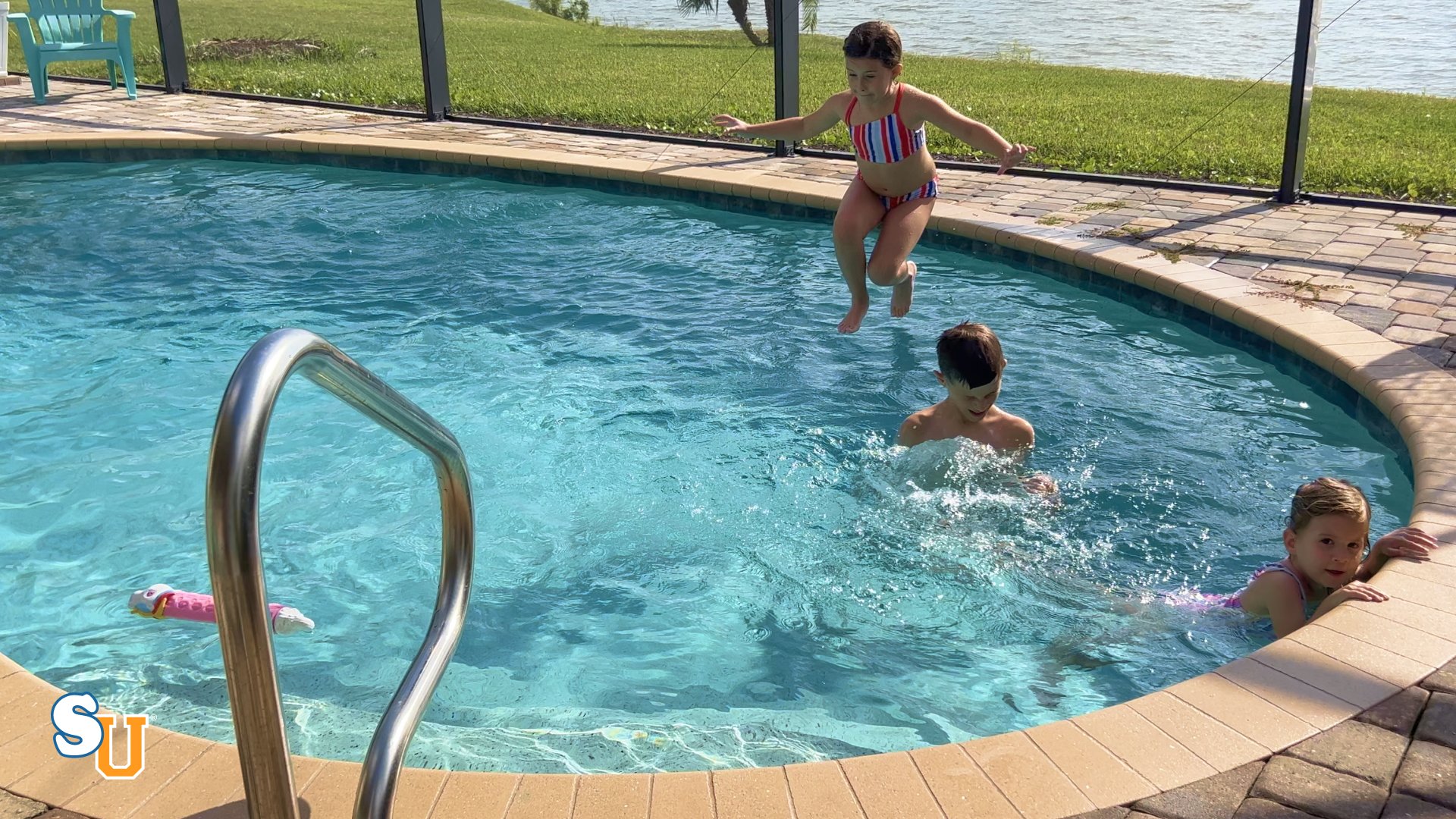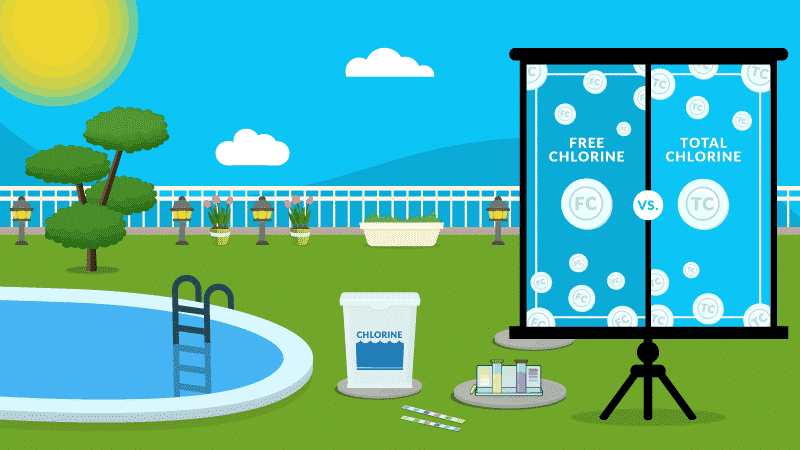How to Shock a Pool The Right Way
Shocking your pool on a regular basis is a simple way to prevent stray algae and bacteria from taking root in your water. It also helps keep your pool smelling … well, hopefully like nothing at all.
This is the ultimate guide to keeping your pool sparkling clean throughout the year that contains everything you need to know about taking care of your pool the right way. Including saltwater pools.
What is Pool Shock?
Pool shock is a chemical that oxidizes chloramines in your pool water. “Shocking” your pool is also a process called superchlorination. By shocking your pool, you’re adding enough chlorine (or another chemical) to sanitize the water and destroy the buildup of chloramines.
Chloramines form when chlorine mixes with the nitrogen in sweat, oils, and urine. This is a natural chemical process, basically a byproduct of your chlorine doing its job.
Think back to the last time you walked past a hotel pool. The strong chlorine smell actually comes from chloramines, a sign of improperly sanitized water.
Shocking your pool can also help clear up cloudy water and kill pool algae growth if your pool is green.
Stop wasting time and money with confusing water chemistry and maintenance. Our effortless system guarantees to keep your pool balanced, sanitized, and crystal clear all year. Works for all pools including saltwater.
Types of Chlorine
Before we dive into how to shock a pool, you first have to understand the difference between total and free chlorine, and combined chlorine and breakpoint chlorination.
- Free Chlorine (FC) is the amount of pool chlorine actively disinfecting your water. You want your water’s FC level to be between 1 and 3 parts per million (ppm) so the chemical can do its job.
- Combined Chlorine (CC) is the amount of chlorine that’s been used. It’s still in the water, but its sanitizing power is greatly diminished. You want to keep your CC level at less than 0.2 ppm.
- Total Chlorine (TC) is the sum of FC and CC in your pool. Pool water testing kits can measure the FC and TC of your water. To find the CC of your pool, simply subtract the FC from your TC.
- Breakpoint Chlorination is when you have enough FC to shatter the molecular bonds of chloramine. You need to add ten times the amount of CC to hit this point.
Try to reach the breakpoint every time you shock your pool. Not hitting the breakpoint can result in even more chloramines in your pool, and if the chloramine levels continue to rise unchecked, you may eventually have to partially or even fully replace your water to fix the issue.
If you want to learn more about the difference between free and combined chlorine, we wrote a full article about it here.
Types of Pool Shock
You generally can’t shock your pool using regular chlorine tablets, but you do have your choice of products when it comes to pumping up your chlorine levels.
1. Calcium Hypochlorite Shock
Also known as cal hypo, this chemical has been used to disinfect swimming pools and municipal water sources since 1928. It’s one of the most inexpensive and convenient ways to shock your pool.
- Most commercial versions contain between 65% and 75% chlorine.
- Calcium hypochlorite needs to be dissolved before you add it to your pool.
- It must be used after dusk.
- It will be roughly eight hours before you can safely swim again.
- It adds about 0.8 ppm of calcium to your water for every ppm of FC added, so use caution if your water source already has a high level of calcium.
This fast-acting, quick-dissolving swimming pool shock kills bacteria, controls algae, and destroys organic contaminants in pools.
2. Lithium Hypochlorite Shock
If your water has high calcium content, and you don’t mind paying a little extra, lithium hypochlorite is the way to go. It dissolves much more quickly than calcium hypochlorite, so you can add it directly to your pool without dissolving it beforehand.
- Commercial versions contain 35% chlorine.
- It must be used after dusk.
- It will be roughly eight hours before you can safely swim again.
- It can be toxic to aquatic life (making it a solid algaecide), so you must take care when disposing of recently treated water.
Note: You may have a difficult time finding lithium hypochlorite. Some pool chemical manufacturers have stopped producing it due to the rising cost of lithium, most of which is now used to make lithium batteries.
3. Dichlor Shock
The actual names of this swimming pool shock chlorine are sodium dichloro-s-triazinetrione or dichloroisocyanuric acid. (Try saying either of those five times fast.) Dichlor shock is much easier to say and even easier to use. Depending on the brand, you may be able to add it directly to your pool. Also, you can use this type of shock for saltwater pools.
- It typically contains between 50% and 60% chlorine.
- You can use it for both regular chlorine doses and shock treatments.
- You typically don’t have to dissolve it ahead of time.
- It adds 0.9 ppm of cyanuric acid for every ppm of additional FC.
- It must be used after dusk.
- It will be roughly eight hours before you can safely swim again.
This multifunctional pool shock from Clorox comes in a 12-pack. The algae-fighting granules create crystal clear water by killing bacteria and organic contaminants. It works well for smaller pools and saltwater pools. As a dichlor-based stabilized cholorine shock, it does contain cyanuric acid.
4. Non-Chlorine Shock
If you’re looking to shock your pool and take a dip soon afterward, this is exactly what you need. Non-chlorine shock using potassium peroxymonosulfate is a fast, inexpensive pool shock alternative. This is the preferred shock for saltwater pools.
- You can add it directly to your pool water at any time.
- It will be roughly 15 minutes before you can safely swim again.
- Because it doesn’t rely on chlorine, it does not function as an algaecide.
A powerful oxidizing agent that eliminates combined non-sanitizing chlorine (chloramines) and provides higher free chlorine levels. Helps eliminate algae growth as well as harmful bacteria. Ideal for use with chlorine or bromine sanitized applications, weekly maintenance, and will not affect other chemical levels
When to Shock Your Pool
The instructions on chlorine shocks say they need to be used after the sun has gone down. This is because the sun’s uv rays burn off unstabilized chlorine, which means the shock won’t be as effective. Shocking your pool at night makes sure the chemicals work the way they were meant to.
How Often Should You Shock Your Pool?
We recommend shocking your pool once a week, or at least once every other week, to maintain sanitized water chemistry properly. The more often you use the pool, the more often you should reach for the swimming pool shock. In addition to your weekly or semi-weekly treatments, you may want to perform an extra pool shock under certain circumstances, such as after:
- heavy pool use (like a pool party)
- a severe rainstorm or damaging winds (especially if your pool collected debris)
- a major water level change
- a bowel-related pool accident
Think of extra shocks as insurance against wayward algae and other contaminants. It’s better to take out any bacteria before it has a chance to affect the quality of your water or make anyone sick.
How to Shock a Swimming Pool The Right Way
Superchlorinating your pool is shockingly easy (sorry, we couldn’t resist) once you get the hang of it. Also, this process works for any type of swimming pool, including inground, above-ground, and small inflatable or quick-set pools.
Important: Remember, if you’re using chlorinated pool shock, wait until the sun goes down before adding it.
Supplies For Shocking Your Pool
- Protective eyewear
- Chemical-resistant gloves
- Pants and a long-sleeved shirt (that you won’t mind messing up)
- Closed-toe shoes
- Water test strips or liquid test kit
- Calcium Hypochlorite Pool Shock
- 5-gallon bucket (if you need to dissolve the pool shock before adding it to the water)
- Wooden stick (for stirring to dissolve)
Before you start, you’ll need to calculate your pool’s volume. If you don’t already know how much water your pool holds, you can use this pool calculator to figure it out.
 Rectangle
Rectangle
 Round
Round
1. Test The Pool Water
Do a quick round of pool water testing. The Free Chlorine level should be lower than the Total Chlorine level. This means your Combined Chlorine level is off and it’s time to shock your pool.
Also, check the pH and alkalinity levels. Make sure your pH level is between 7.4 – 7.6 and your alkalinity level is between 100 and 150 parts per million (ppm). This will balance the pool water chemistry so the shock treatment is more effective.
You can also check your calcium hardness level to make sure it’s in balance with the pH and Alkalinity. If your pool has a vinyl or fiberglass liner, the calcium hardness level should be between 175 parts per million (ppm) and 225 ppm. If you have a concrete or plaster pool, keep the level between 200 ppm and 275 ppm.
2. Pre-Dissolve Pool Shock
Carefully read the manufacturer’s instructions on your shock product. Most packages include charts or steps to help you calculate the amount of shock you need. If you need to calculate it yourself.
If you need to dissolve the shock first, fill your bucket roughly ¾ full with warm water. Add the shock to the bucket, and slowly stir until the chemical is as dissolved as possible. Work in one-pound increments.
3. Add Pool Shock To Water
If you do not need to dissolve your shock, count how many containers of shock you need. Add one bag at a time until you reach your calculated breakpoint.
At this point, make sure your pool pump and pool filter are running at full speed. This will help mix in the shock more effectively. Keep the system running for at least 8-12 hours after adding shock.
Slowly pour the shock while walking around your pool for more even distribution. (If your shock-water mix has solid particles at the bottom, dip the bucket into your pool water, carefully swish around to dissolve, and keep pouring.)
Wait to use your pool based on when you added the shock and the manufacturer’s recommendations. You don’t want to irritate your skin and eyes or bleach your swimsuit.
How to Shock a Saltwater Pool
Is it okay to shock a saltwater pool? A lot of pool owners think saltwater pools are different from traditional chlorine pools. But the salt in the water passes through a generator which turns it into chlorine. All saltwater pools are actually chlorine pools. The only benefit is that you don’t have to add the chlorine yourself. It’s being generated by your filter system.
This means you can shock your pool using the traditional shock methods outlined in this article. However, we recommend only using Dichlor or non-chlorine shock for saltwater pools.
You don’t always have to shock the pool this way. Most saltwater generators include a “super chlorinate” button that ramps up the production of the chlorine it produces helping you get to breakpoint chlorination, thereby “shocking” your pool.
And just like a traditional pool, we recommend doing this one a week or every two weeks depending on weather and usage. For heavy rain and/or high usage, shock your saltwater pool once a week.
Pool Shock Safety
Shocking your pool is a necessary part of good maintenance, but please remember those chemicals can be extremely dangerous if they’re mishandled. We’re not exaggerating the danger—improperly stored chlorine can literally explode.
- Never add shock through your pool skimmer, especially if you have an automatic chlorinator. When the shock treatment mixes with the chlorine, it causes a dangerous gas, which can lead to your chlorinator exploding! We’ve seen it happen multiple times.
- Always wear protective gear—especially goggles and chemical-resistant gloves—when handling and dissolving chlorine. Pool shock, especially calcium hypochlorite, can sometimes release small amounts of chlorine gas. Wearing protective gear can help prevent eye and skin irritation.
- Do your best to avoid directly breathing from the containers. Exposure to chlorine gas can cause throat and lung irritation. You probably don’t need a dust mask, just try not to breathe too close to the container. If it makes you feel safer, though, you can use a chemical mask.
- Never, ever mix types of pool shock. We don’t want you to become a home science experiment gone wrong. Mixing liquid chlorine or even dry chlorine granules can cause a volatile reaction. Add each chemical to your pool separately.
- Do not add shock directly to the pool water unless instructed to do so. If the package says dissolve before adding, make sure to do just that.
- Only open one container at a time. If you need to use more than one container of shock, make sure you completely empty out each container before moving on to the next one.
Frequently Asked Questions About Shocking Your Pool
Looking for more help with shocking your pool? Here are some common questions and answers.
Are chlorine and shock the same thing?
No. There are versions of shock that have chlorine, like Calcium Hypochlorite. But some pool shock treatments have no chlorine. However, you can use a high dose of liquid or granular chlorine to shock your pool.
Can I shock my pool without the pump running?
We recommend running your pump and filter when you’re actively shocking your pool and for at least 8-12 hours after. If you don’t run your pump and circulate the water, you run the risk of bleaching your pool walls and floor if you’re using chlorine shock.
Can I swim 12 hours after shocking the pool?
It’s usually safe to swim after letting the shock circulate in the water for at least 8 hours. However, we recommend testing the water’s chlorine level before swimming. A high chlorine reading may be uncomfortable and dangerous to swimmers.
Does pool shock work in cold water?
Yes, but no matter what the temperature of your pool water, we recommend dissolving shock in a bucket of warm water before adding it. This will help dissolve the shock so it doesn’t sit on the bottom of your pool and cause bleaching. Plus, it helps it to mix into the water better and faster.
4 Ways We Can Help With Your Pool
- Pool Care Cheat Sheets (Free): Easy-to-use downloadable guides to help you keep track of taking care of your pool this year.
- The Pool Care Handbook: An illustrated guide to DIY pool care, including water chemistry, maintenance, troubleshooting, and more.
- The Pool Care Video Course: You’ll get 30+ step-by-step videos and a downloadable guide with everything you need to know about pool maintenance.
- The Pool Care App: Enter your water test results. Get a custom treatment plan. Know exactly what chemicals to add to keep your pool clear.

